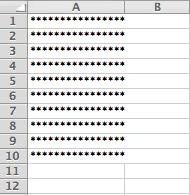The Dos and Don'ts of Storing Credit Card Information
An example of insecure credit card number storage comes from one of our PCI assessors, where a company explained how they processed their credit cards.

An example of insecure credit card number storage comes from one of our PCI assessors, where a company explained how they processed their credit cards.

Payment card data is an important topic for merchants. It doesn’t matter how big an organization is, or how many years they’ve been in business, if they handle credit card data, chances are they store it inappropriately somewhere on their devices and systems.
Your customer's credit card data is sensitive information, and if you process major credit cards, you have agreed to maintain PCI compliance. PCI compliance requires merchants to take measures to secure payment card data as well as prevent data breaches.
An example of insecure credit card number storage comes from one of our PCI assessors, where a company explained how they processed their credit cards. They told him how their secretary had a secure way of storing the inner-office credit cards.
In one example of unencrypted credit card number storage, a secretary believed she had “encrypted” the credit cards at her company because she stored them in an Excel file and when the rows were shortened, the numbers reformatted to a line of asterisks:

See also: Infographic: 63% of Businesses Don't Encrypt Credit Cards